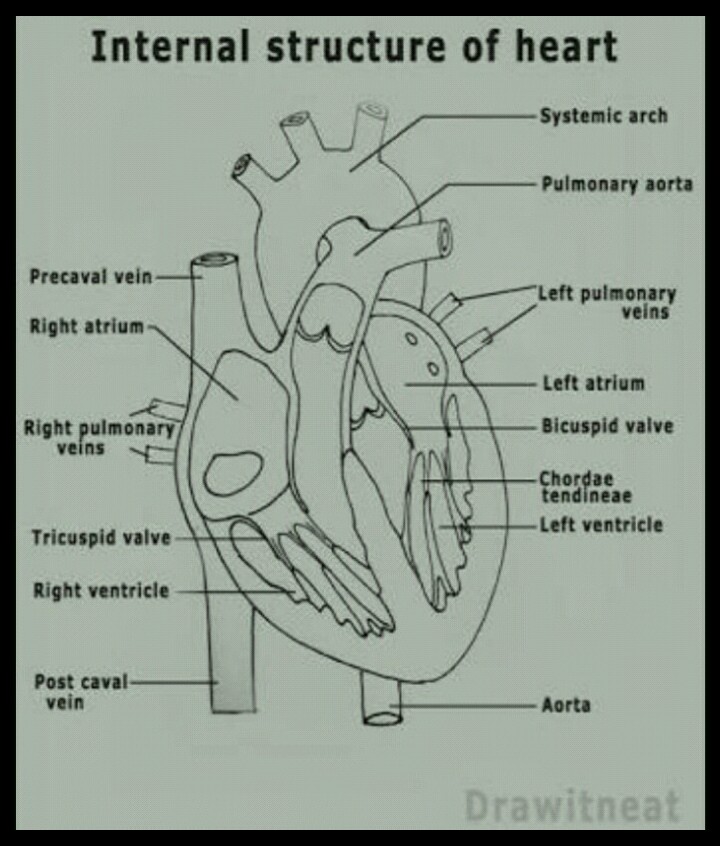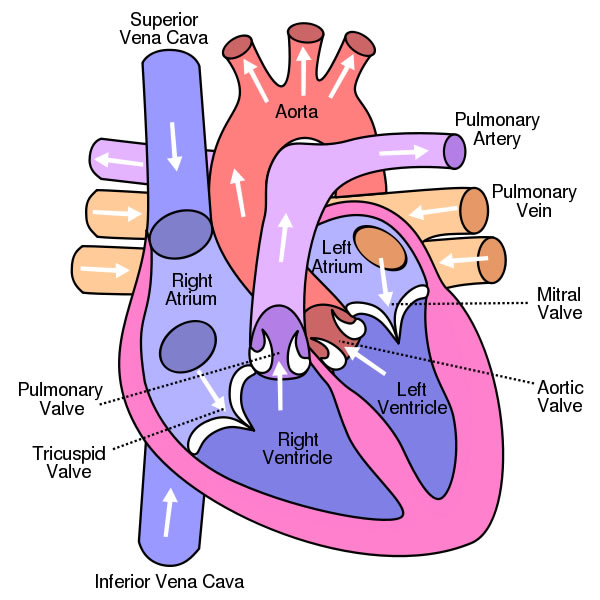Human Heart
The Heart is a critical muscle that pumps blood through three sections of the circulatory system: pulmonary (lungs and heart), systemic (body systems) and the coronary (vessels that serve heart). Coronary circulation that is essential to the heart carries blood from the main artery that comes from the heart.
Heart Structure

Layers of the Heart
It consists of three layers namely:
Myocardium– The myocardium includes heart muscle cells that make up the bulk of heart wall and the middle layer.
Epicardium – The outer layer of cells is known as epicardium and the second layer which is membranous surrounds and protects the heart.
Endocardium -The endocardium lines the inner wall of the heart.
1. The Pericardium
It is a fiber kind of a covering around the heart and keeps it in place. This is a unique membrane and lubricates the heart in the pericardial space to avoid friction. Pericardium has two exclusive layers:
- Visceral layer directly covers the heart.
- Parietal layer forms a sac that contains the fluid in the pericardial cavity.
2. The Heart Wall
The heart wall consists of three layers:
Epicardium – This is the outermost layer of the heart and a thin layer of membrane that protects and lubricates the outer its section.
Myocardium – This is a muscular layer and consists of muscle tissue. It contributes to the thickness and responsible for the pumping action.
Endocardium – It is the innermost layer that lines within the heart and keeps blood from sticking and prevents the formation of harmful blood clots.
3. Chambers of the Heart
The four chambers are as mentioned below:
- Left atrium
- Right atrium
- Left ventricle
- Right ventricle
Atria are thin, less muscular walls and smaller than ventricles. These are the blood-receiving chambers that are carried to the heart by the large veins.
Ventricles are larger and more muscular chambers of pumping and push blood out to the circulation. These are connected to larger arteries that deliver blood for circulation.
The right ventricle and right atrium are smaller than left chambers. Their walls consist of fewer muscles compared to left portion and size difference is based on their functions. The blood from the right side flows through the pulmonary circulation while blood from the left chambers is pumped to the complete body.
4. Blood Vessels
- The blood vessels are the tubes that deliver blood to all parts of a body.
- Veins supply deoxygenated blood to the heart via inferior and superior vena cava that drains into the right atrium.
- Capillaries are very small, tube like vessels which form a network between the arteries to veins.
- Arteries are muscular-walled tubes which are involved in supplying oxygenated blood away from the heart to all other parts of the body. Aorta is the longest artery that leaves the heart and gives off smaller branches.
5. Valves
- These are the fibrous flaps of tissues that are present in cardiac chambers between the veins. They ensure unidirectional flow and prevent backflow of blood.
- Atrioventricular valves are present in every ventricle and atrium. The valve between the ventricle and right atrium is the tricuspid valve, and the one which is found between the left ventricle and atrium is known as the mitral valve.
- Semilunar valves are present in the large arteries and ventricles. An aortic valve is present between the aorta and left ventricle, and a pulmonary valve exists between the pulmonary artery and right ventricle.
Heart Functions

Our Heart is about the size of a fist divided into four chambers namely two ventricles and two atria, as discussed above. There are one ventricle and one atrium on the left side and the other atrium and ventricle towards the right side. The ventricles are the chambers that pump blood and atria are the chambers that receive blood. The deoxygenated blood received to right atrium from:
- The superior vena cava is released into the veins of the upper arms and organs.
- The inferior vena cava that leaves blood from the veins of legs and lower organs.
- The coronary sinus, that leaves deoxygenated blood from the heart.
The right ventricle pumps the blood to the lungs for re-oxygenation when it gets filled up by the pulmonary arteries. The right semilunar valves close and prevents the blood from the pulmonary veins after blood passes through the pulmonary arteries. Then the oxygenated blood is received by the left atrium from the lungs via pulmonary veins.
if u like my answer please hit like....
experts please promote my answer.
- 1


 dont include the ASP
dont include the ASP

















